12.02.2024
Back and Again. On the Practice of Latent Community
Moving image
Visual arts
by Danai Giannoglou
Copy edited by EG Figure of Speech (Geli Mademli & Eleanna Papathanasiadi)
In 2016, Ionian Bisai and Sotiris Tsiganos found out about the history of Kallio, a village in Fokida, Greece, which was expropriated by the Greek junta in 1969 and covered by the waters of an artificial lake that would constitute the main water supply reservoir for the city of Athens. While researching and conducting interviews in order to gather more material with regards to this admittedly extraordinary case, not only did they discover that access to information was particularly difficult but also that surprisingly few people were aware of this series of events. Back then, Ionian and Sotiris were struck by the existence of a gap, something that was missing, which for them held a personal but also artistic interest.
To speak about how Latent Community came into being is to speak about this story and about Neromanna – their first video work, which carries the DNA of their practice in terms of subject matter, methodology, medium, and community engagement. The artist duo which was formed around this project, has been attempting to find ways to comprehend the world and our era way before that time, ever since they were teenagers, neighbors, and high-school classmates. Questions on how to position oneself within societies and towards political, societal, and ecological matters have prompted them to explore theoretical and practical tools rather than artistic ones. Later on, their shared practice became a vehicle for their attempt to answer these questions.
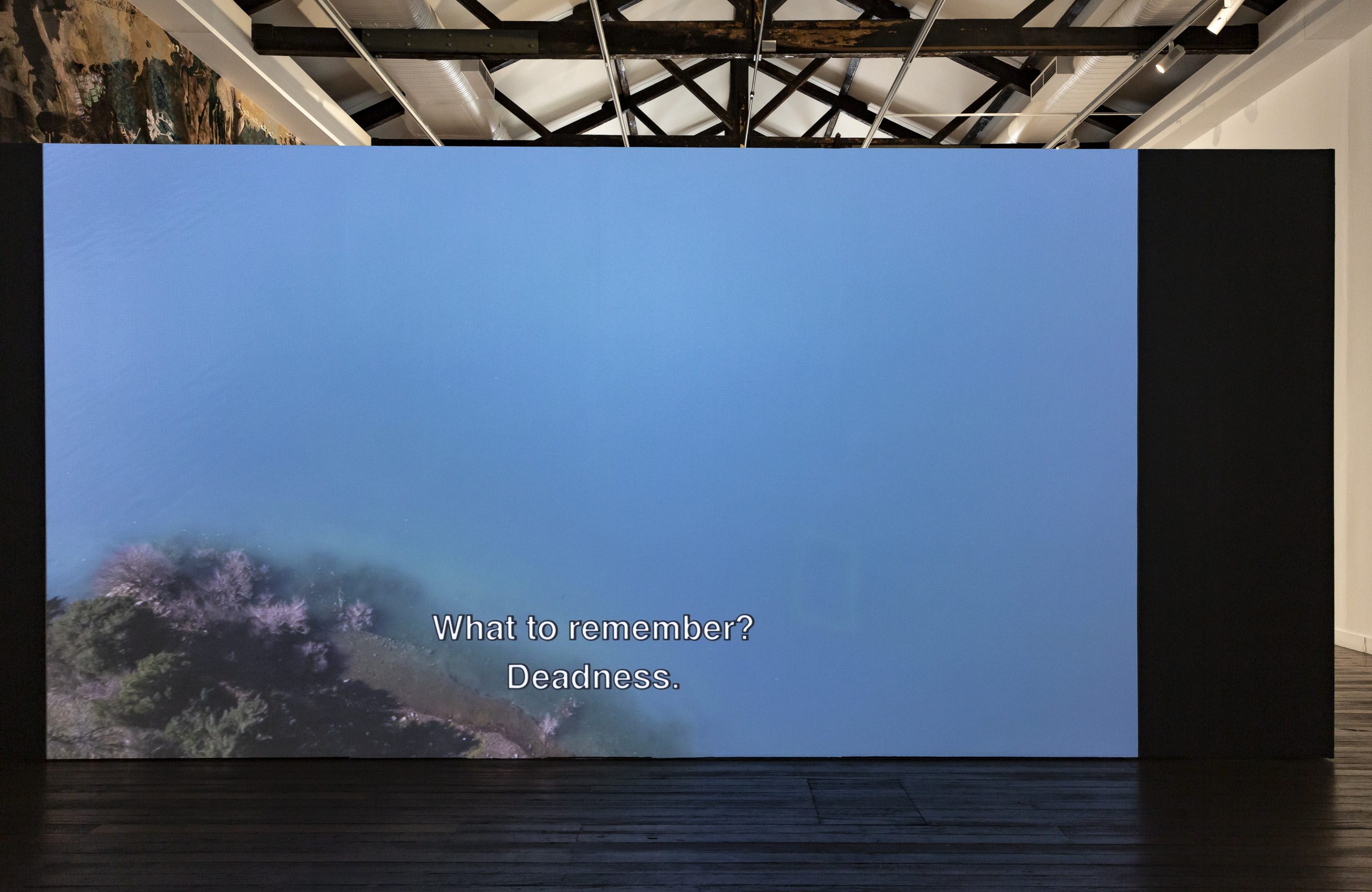
When they first visited Kallio and the surrounding areas, they realized that the information, knowledge, and experience they were looking for was in fact contained in the undocumented and non-communicated oral histories of the former residents of the village, the population that had to leave their homes behind “so that Athens can drink water,” as mentioned by them in the film.
Even though Ionian and Sotiris were trained as painters, it was this particular story that turned them to the moving image. To be able to tell this story, it was of utmost importance to find the most ‘immediate’ medium of communication and one that could potentially involve the community itself - either as directors or as subjects standing in front of the camera, reclaiming the narratives around what had happened. However, the duo remained skeptical and careful about the politics of observation and documentation: “The camera is not neutral, it is a separate body that exists within the bodies of the participants, and this surely creates a certain dynamic. However, we are interested in how the camera can oscillate between distant observation and active participation. When we film, we are not flies on the wall, we are actively engaged and we are not concerned about hiding it.”¹
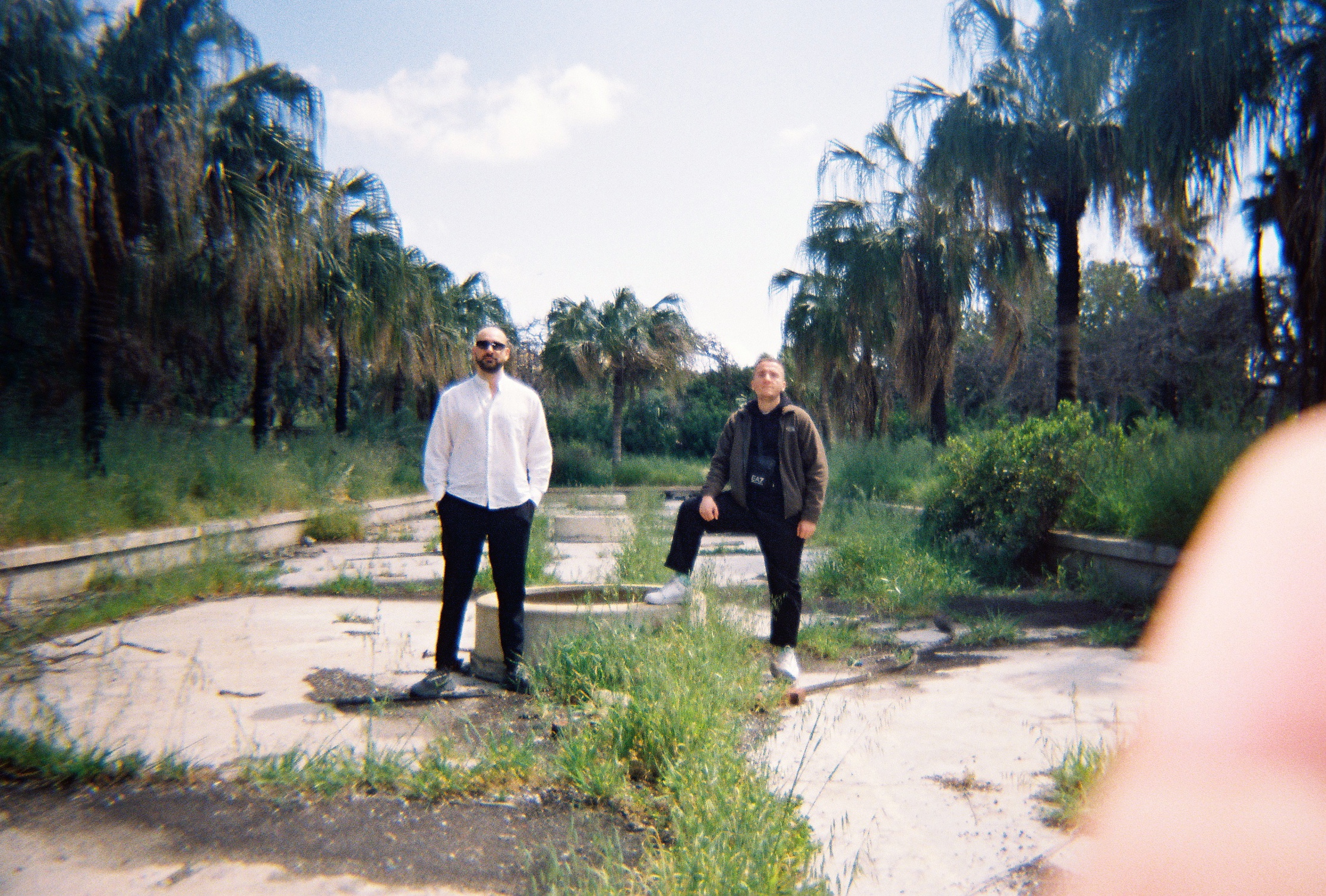
It is clear that their camera is used differently in each of their moving-image works, depending on the needs of the story, subject matter, or project. From the careful use of high production cameras cameras in Otranto, a film about the shipwreck of Katër i Radës in 1997 — the first boat that sank in a naval blockade against migration flows in the Mediterranean Sea, leading to the death of 81 passengers, whose families are still seeking justice; to the use of a mobile phone camera for Horses, a film on the human-animal relationship situated on the Greek island of Lesbos; Latent Community are interested in the power of different filmic tools. For them, the camera always plays a social role and addresses questions of access to image production, representation, and historicization through documentation.
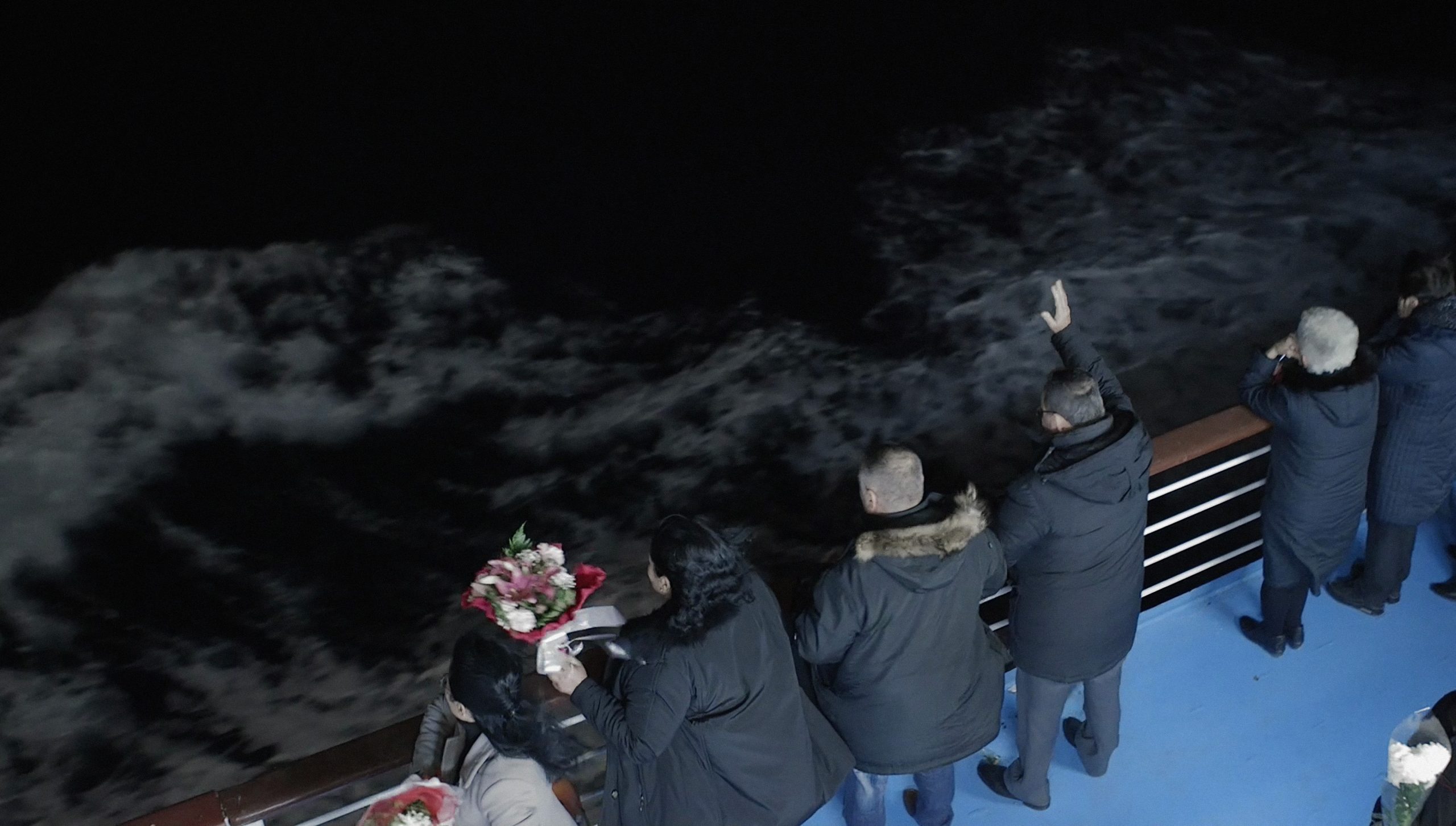
Nonetheless, they resist - and rightly so - a possible categorization as documentarists. Profoundly aware of the responsibility that often comes with the subject they choose to work with, they believe that the context itself dictates the filmic narration, the same way that the story dictates the camera style. Through their usage of sound, dialogue, and image - or the absence of them - this approach is becoming more and more evident as their practice evolves from Neromanna, (2017), Otranto (2020), and Horses (2022) to Water Voices (2022).
Locally and regionally rooted, in the sense that they are striving to break the center- periphery binary, and community-based, in the sense that their starting point is always the research on human or non-human societies, Latent Community’s work is its context in itself, usually informed by issues of political, social, and ecological justice. Without turning a blind eye towards privilege, their effort is to speak about communities and places as an immense constellation of interconnected concentric circles where any disruption will travel as a wave and affect different agents in different temporalities and intensities. Obviously and undoubtedly, the less privileged - people, communities, beings, regions - experience in the present time what will slowly but steadily then be the political, ecological, and social future of the rest.
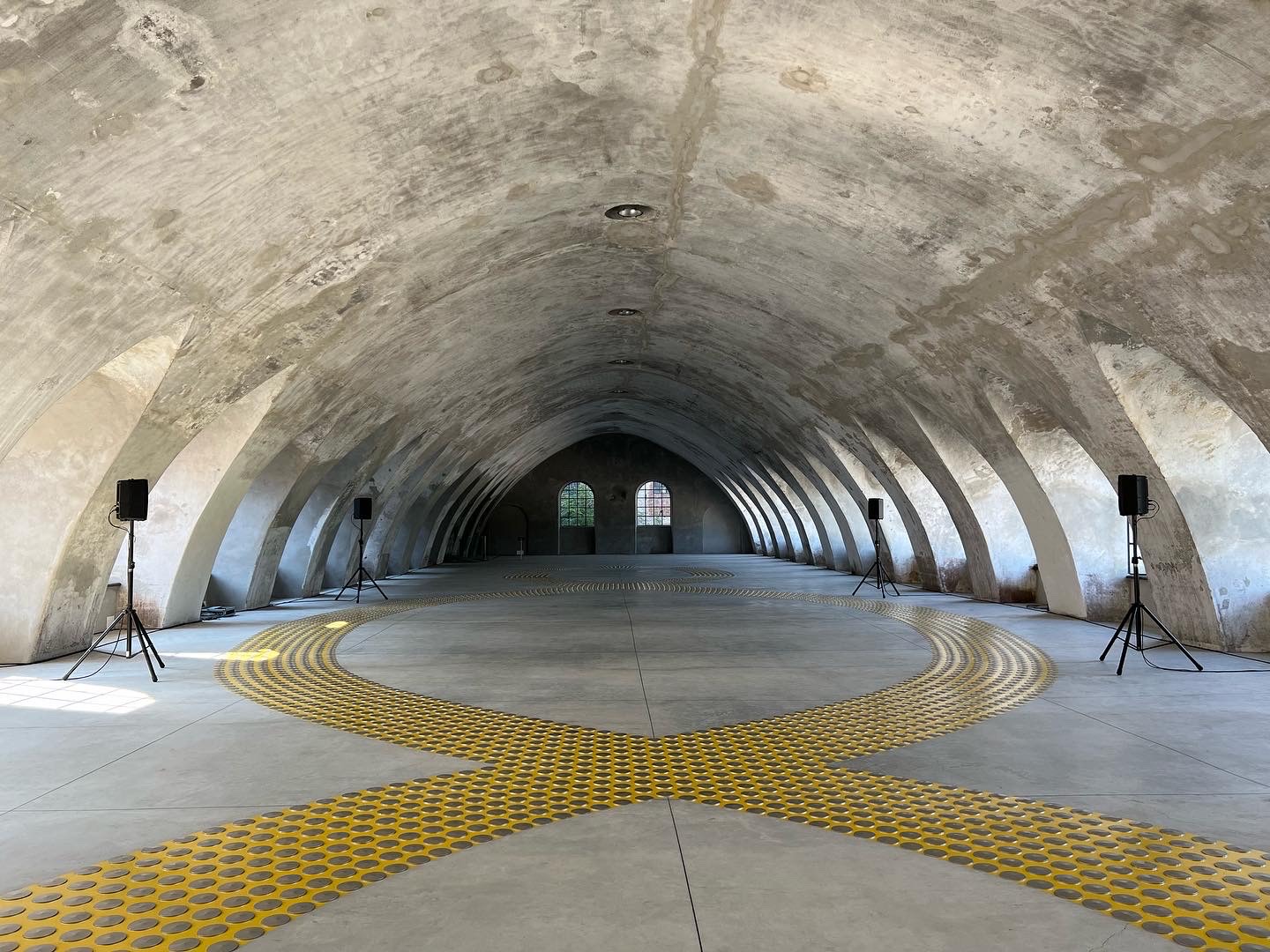
The key word here is ‘wave.’ From Neromanna to one of their latest works that deals with the Mediterranean Sea, aquatic ecosystems, and how entire cities were built against the water, it wouldn’t be an exaggeration to say that Ionian and Sotiris recurrently use the language and voice of water: “It is through water that we understand our relationship with the world. It surrounds us and there are countless stories about it - mainly stories of violence. The Mediterranean Sea is a battlefield and this is intrinsically weaved into the Greek landscape. If you can scratch the surface of the sea, you can find not only lost stories, but also answers.”²
They look at water like an open wound where histories of oppression and extraction are inscribed, but at the same time they understand it as a deep connective tissue between communities. How did humans who were once connected with water, recognizing it as a source of life, have over the years - and especially in Western cultures - taken a stance that goes against it and against nature by and large?
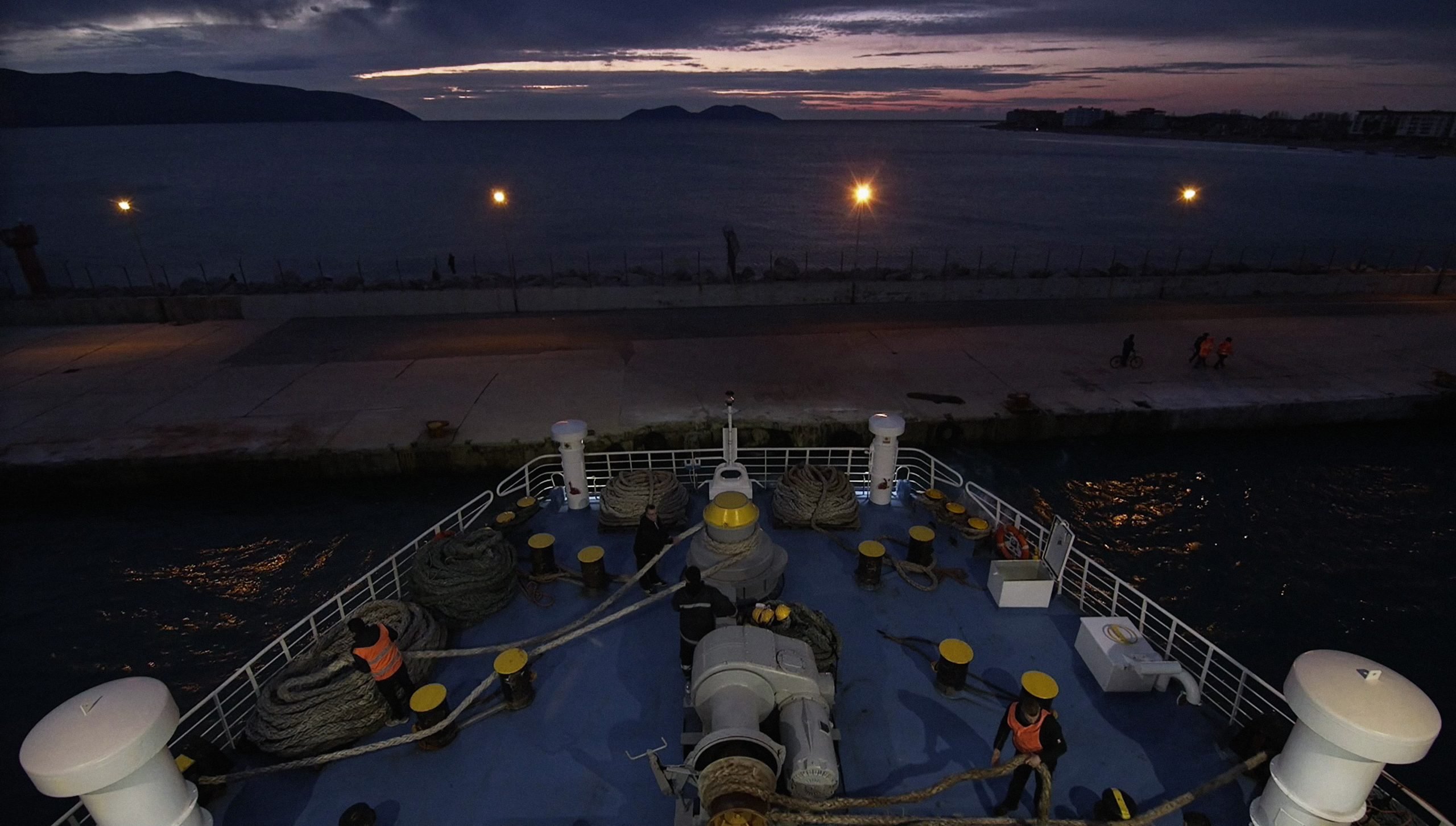
Latent Community’s interest in the liquid element manifests their wish to work with what surrounds us and hence to investigate what is our position with regards to these surroundings - physical and non-physical alike. In order to do that, the work has taken many different shapes throughout the years, challenging the moving image, sound and technological tools with abstraction, and they have been involved with different geographies and communities. What is particularly interesting about the evolution of their work, is that however versatile it is becoming, parts of it can always be traced back to Neromanna, reigniting something that creates a cyclical, manifesto-like consistency that runs through Latent Community’s entire practice.
During a visit of Ionian and Sotiris to Kallio for reasons of filming, a former resident tried to reinstate the lost topography of the village by pointing at areas of water and speaking about what was hidden underneath its surface. In that way, Neromanna marked not only the beginning of the collaboration between Jonian and Sotiris, their initiation in the world of the moving image, and the foundation of their recurrent research, but it also became the catalyst for selecting the name of their artistic group. Always delving into communities that are hidden or in hiding, sometimes as a self-defense mechanism and other times as a strategy imposed by the dominant context, delving into whispered stories and invisible presences, the duo writes about Kallio and Neromanna: “The ghost is not the sunken village, but the latent conflicts between the natural and the artificial, between the metropolis and the periphery, between the dominant narratives and the counter-stories.”³
Ionian Bisai (SNF ARTWORKS Fellow 2020) and Sotiris Tsiganos (SNF ARTWORKS Fellow 2021 )are visual artists and filmmakers based in Athens. In 2016, in the context of their long-term artistic collaboration they founded the Latent Community project, an ongoing artistic investigation intertwining fieldwork and moving image in order to tackle contemporary judicial, social and ecological issues. The duo aims to create conceptual and emotional experiences through which a more equal and sustainable future may be imagined. Their work has been presented in several international exhibitions and festivals (Athens Biennale, documenta14 - Public Programs, Thessaloniki Documentary Festival, Polyeco Contemporary Art Initiative, Museum of Contemporary Art of Crete and the Recontemporary cultural association in Turin). Ionian Bisai and Sotiris Tsiganos have been awarded prizes by the LOOP artistic platform in Barcelona and Sharjah Art Foundation (United Arabic Emirates). For the period 2020–2021, they are fellows of Onassis AiR - School of Infinite Rehearsals.
Danai Giannoglou (Athens, 1992) is an independent curator and writer based in Athens. She currently participates in the De Appel Curatorial Programme 2019–2020 in Amsterdam. Giannoglou is the co-founder and curator of Enterprise Projects, a project space functioning independently and periodically since September 2015 in Athens, as well as the Editor of Enterprise Projects Journal, a publishing initiative by Enterprise Projects uploading newly commissioned theoretical and research essays. She has worked for public and private institutions in Athens and Paris. Between 2018–2019 Danai Giannoglou was the Exhibitions Archive Coordinator at DESTE Foundation for Contemporary Art. She has contributed texts in catalogues, publications and online art magazines and she has curated exhibitions in Greece and abroad. Giannoglou holds a BA in Theory and History of Art from the Athens School of Fine Arts and an MA in Cultural Management and Curating from Paris 1 Panthéon–Sorbonne University. She has been resident at Rupert, Lithuania in 2016 and at the 8th Gwangju Biennale International Curator Course, South Korea in 2018. She is a recipient of the SNF ARTWORKS Artist Fellowship Program (Curating) 2019/20 as well as of Onassis AiR Emergency Fellowship 2019/20.
¹ Excerpt from a personal interview with Sotiris Tsiganos and Ionian Bisai, conducted on July 3, 2023.
² Excerpt from a personal interview with Sotiris Tsiganos and Ionian Bisai, conducted on July 3, 2023.
³ Excerpt from the text accompanying Latent Community’s participation in the 24th Biennale of Sydney, which is based on the essays “Entangled Visions” (The School of Infinite Rehearsals: Movement II, Scored Invocations, edited by Alkisti Efthymiou, Onassis Foundation, 2021) and “Latent Practices” (RCA — CAP: Moving Image, 2021).



